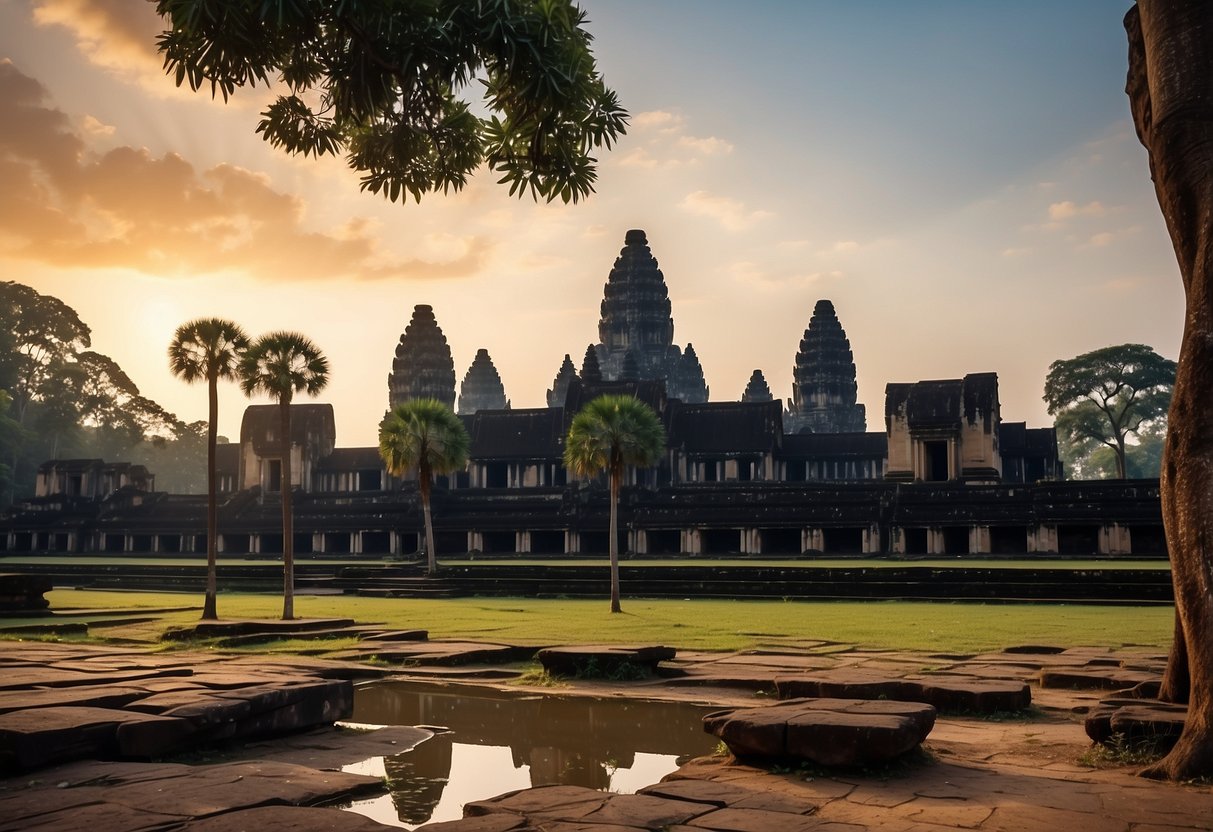
Unveiling the Hidden Gems
While Angkor Wat is the most famous temple in Cambodia, other remarkable temples offer unique experiences and fascinating histories. These hidden gems provide a more intimate look at the architectural and cultural wonders of the region.
Lesser-Known Temples and Their Stories
There are several lesser-known temples that captivate visitors with their distinct charm. One such temple is Banteay Srei. Known for its intricate carvings in red sandstone, it stands out for its small scale yet exquisite detail. Banteay Srei is sometimes referred to as the “Citadel of Women,” due to its delicate and intricate artwork, believed to have been too fine for men to create.
Neak Pean is another hidden gem, originally designed as a hospital for ancient Angkor. It’s famous for its unique structure, featuring a central pond surrounded by four smaller ponds. The site once contained healing pools, reflecting the ancient Khmer civilization’s sophistication in engineering and healthcare. Despite its small size, Neak Pean’s design is a fascinating glimpse into the Khmer understanding of symbolism and spirituality.
Another lesser-known temple worth visiting is Koh Ker. Koh Ker served as the capital of the Angkorian empire for a brief period in the 10th century. Its most striking feature is Prasat Thom, a seven-tiered pyramid that offers panoramic views of the surrounding jungle. These temples provide a more relaxed, less crowded experience, allowing for a deeper appreciation of their historical significance and architectural beauty.
Off the Beaten Path: Exploring Remote Sites
To explore even more secluded sites, travel off the beaten path to discover hidden treasures like Beng Mealea. Located about 70 km from Siem Reap, this temple is engulfed by the jungle, giving visitors an Indiana Jones-like experience. Unlike many restored temples, Beng Mealea remains in a state of ruin, offering a raw and unfiltered glimpse into the past.
Preah Vihear, perched atop a 525-meter cliff in the Dângrêk Mountains, offers not only historical significance but also stunning views. This temple is known for its incredible layout, which differs from the usual Angkor temples. It stretches along a north-south axis, leading to a series of sanctuaries along an 800-meter path. The remote location ensures fewer tourists, making the journey to this UNESCO World Heritage Site even more rewarding.
Exploring these remote sites not only provides a sense of adventure but also grants a deeper insight into the diversity and grandeur of Khmer architecture. These hidden gems, with their unique stories and stunning locations, offer a treasure trove of experiences for those willing to venture beyond the main attractions.
The Odyssey of Restoration
Restoring Angkor Wat is a monumental task involving global collaboration. Many challenges arise as teams work to preserve these ancient structures.
Efforts in Preserving the Past
The restoration of Angkor Wat began in the early 20th century. Initial efforts focused on preventing further decay. French archaeologists initially led these efforts, using techniques like anastylosis. Later, new technologies improved preservation.
Modern techniques include laser scanning to create detailed 3D models. These models assist in planning precise repairs. Chemical treatments are also employed to protect the stone from weathering. They balance between preserving historical integrity and preventing further deterioration.
The Role of International Organizations
UNESCO designated Angkor Wat as a World Heritage Site in 1992. This status brought international attention and funding. Various countries have since contributed to restoration projects, often working collaboratively. Japan, India, and Germany are notable contributors.
Organizations like the Global Heritage Fund also play critical roles. They provide expertise and financial support. Collaborative efforts ensure that restoration methods meet global standards. These partnerships help share knowledge and resources effectively.
Challenges Facing the Historical Structures
Maintaining Angkor Wat presents several difficulties. The tropical climate accelerates deterioration. Heavy rainfall and humidity damage the stone structures. Restoration teams must continually adapt their strategies to combat these natural elements.
Tourism adds another layer of complexity. While it generates revenue for conservation, it also strains the site’s infrastructure. Managing visitor impact is crucial to preventing further damage. Balancing tourism and preservation remains a delicate task.
Flooding and groundwater issues also threaten the stability of the structures. Engineers work to improve drainage around the temples. Despite these efforts, nature’s forces and human activity present ongoing challenges in preserving Angkor Wat.